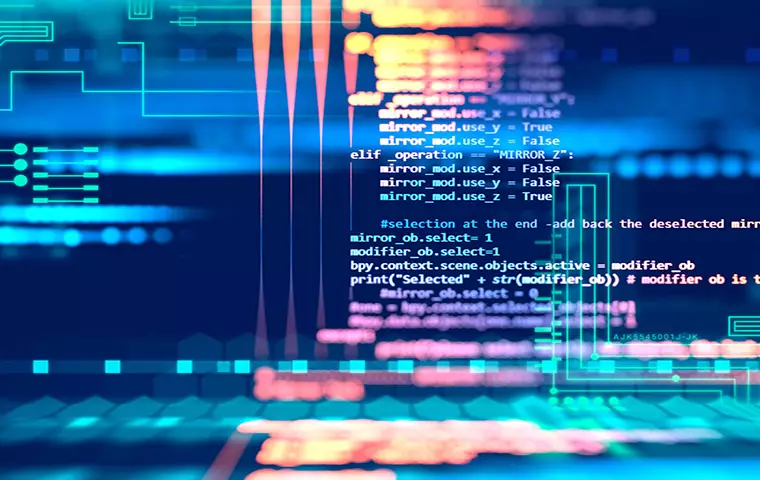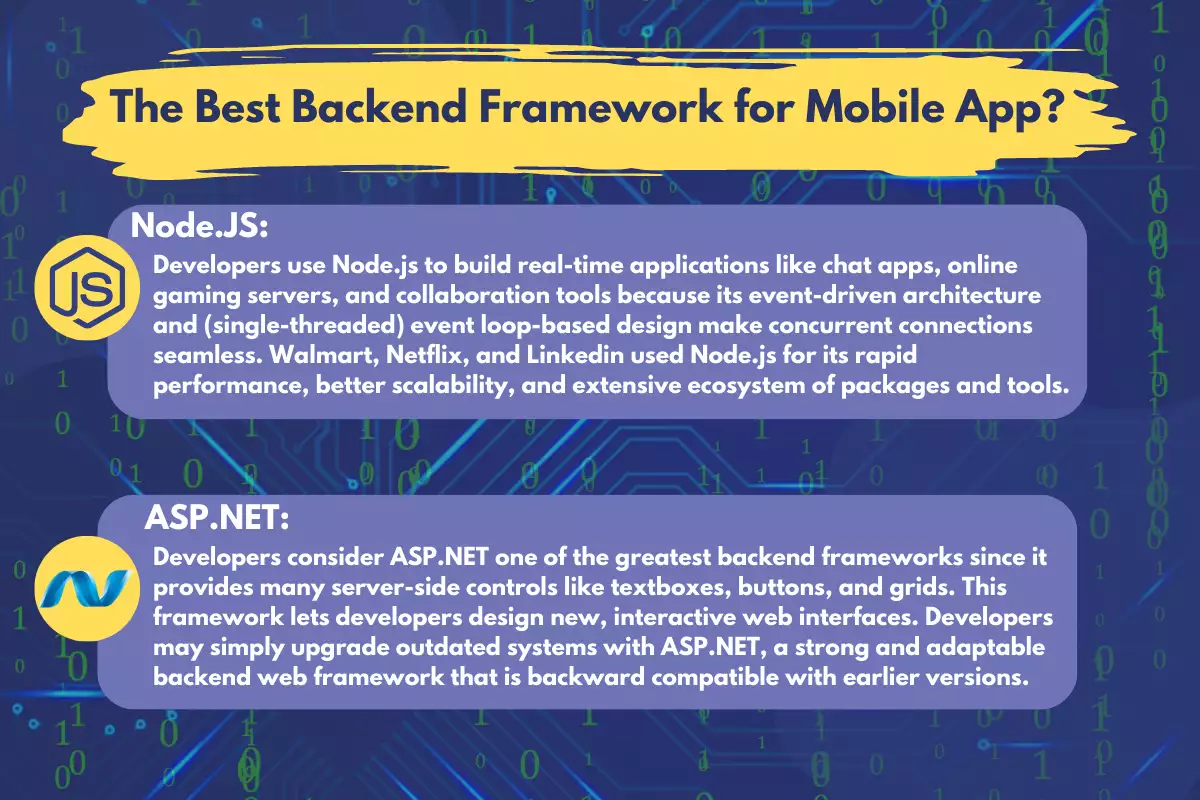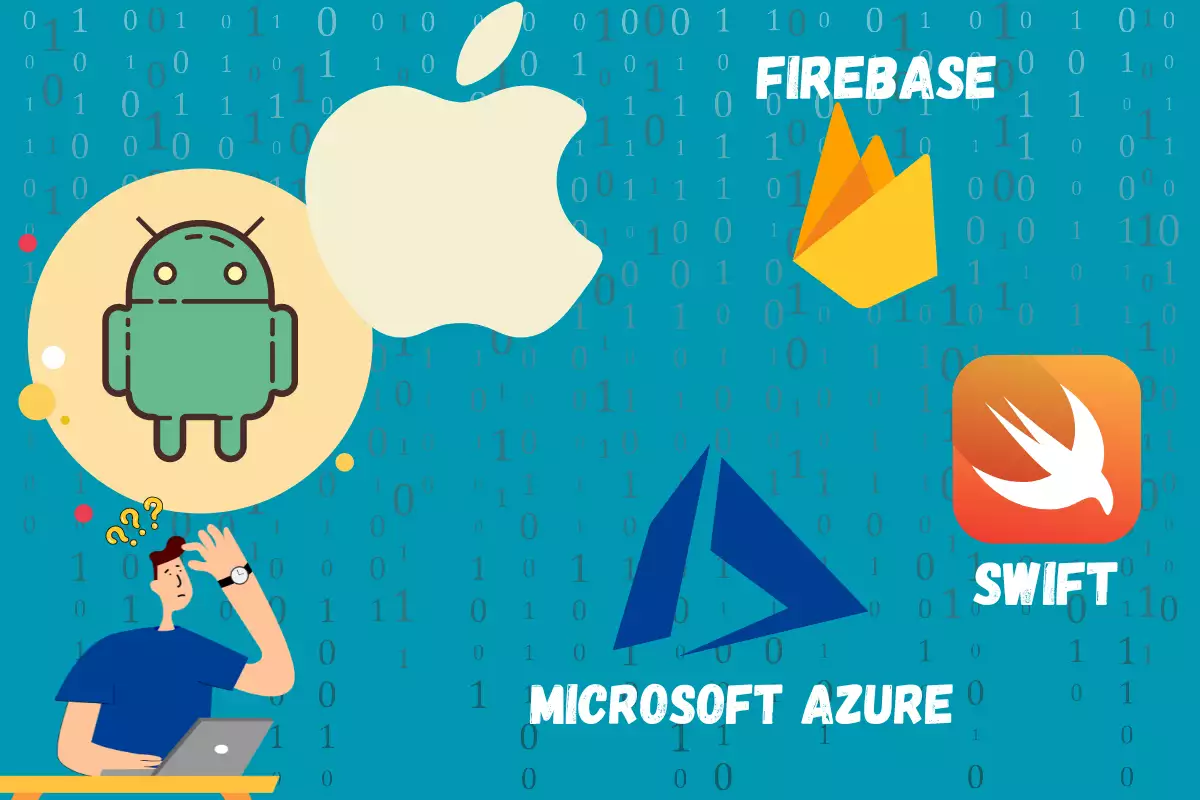


An intuitive content creator in the tech-land of mobile app development
Your mobile applications need the mobile backend development as fuel to run. The critical part is called the captain backstage.
You may be familiar with the server-side in the backend in app development; server-side and backend are identical words, meaning the codes are running on the server.
Developers try to choose suitable backend app development frameworks to answer all the users’ requirements, whether it is iOS or Android OS. The following article is a guide to open up different parts of this hidden part.
What skills are needed to become a developer? And what are the languages? Let’s get helpful information. Stay and increase your tech knowledge to become a pro.
By playing the leading role behind the scene, backend app development wears the invisibility cloak in mobile app development.
The backend is directly connected with the app development, in front end processes everything related to data verification, authentication, processing business logic, data storage, and security.
Consider an e-commerce online shop app or a mobile game; the backend is connected with the functionality, and the front end is related to how the user feels and experiences.

The backend server has 3 main responsibility to speed up and enables a smooth computing experience. It stores, retrieves, and sorts essential information. No matter you’re planing to build a cross-platform, native, or hybrid one.
The backend typically consists of 3 main parts: the server, the app, and the database. the server is where the requests are received, in the app, the application runs on the server listens and watches for requests, and the database also organizes data.
Building any backend generally needs stack components that are:
server.
Besides, any backend needs sets of definitions and protocols to build and integrate the app. APIs form how data is switched between a database and any software accessing it.
Actually, developers plug in their apps and data.
" Most programmers do programming Not because they expect to get paid or get adulation by the public, but because it is fun to program.''
Firebase Backend is a robust mobile backend development platform offering a wide range of services. It simplifies user authentication, real-time data storage, cloud messaging, serverless functions, file storage, and analytics.
With its intuitive interface and comprehensive documentation, Firebase Backend empowers developers to create successful mobile applications in 2023 and beyond.
Various languages are used in the backend, whether you want to build a mobile app or the backend of a web app. Also, you have to consider many factors, such as; file size, performance, compatibility, the line numbers of codes, and programming style.
The programming language is critical through the fact that it creates the internal system in the background of your app. So, what are they?
A common language for native app development on Android OS and iOS. It is also a suitable one for business applications, pc apps, and web-based apps.
Has a lot of abilities like operating systems, browsers, and gaming. Although it is useful in Android OS, it is difficult to set up and less flexible.
A programming language that is versatile enough to build a powerful app. it is a platform independent to allow you to create your app in different operating systems.
The most popular app in both web and mobile applications. Text-based programming to communicate directly on both client and server sides. However, JS is widely used in the front end; Node JS provides the availability of using it in the backend as well.

With less code lines and rules still the most famous language. That makes the development process smooth, simple, and easy. Using a large list of libraries is the other option that makes Python a time-saving development process
6. PHP
A server-side scripting language. It has various features related to development experience and applications like easy usage, and cross-platform nature.
One of the fastest server-side languages, developed by Google. An open-source programming language with simple and basic syntax. You can read more about the mobile app backend languages here.
Continue reading to realize what other factors are needed in the backend development.
As it was mentioned backend has major parts let’s read much more about it:
The server works as a middle component between the backend and the smartphones. it is connectively related to the network.
It ensures the components of the app are presented perfectly on the devices. This system provides resources, services, data, or programs that networks need to run. File storage, security, encryption, database, email, and web services are the duties of the server.

The Database: There are 2 types of databases; relational and non-relational. A database is a place to accept the query and deliver the data. Whether a user is on a website or application, posting, uploading a photo or updating customer information.
The relational database is an organized collection of data with predefined relationships between them. Non-relational data doesn’t use a table model, so data will be stored in a single document file.
The operating system: This is where that needs middleware’s hand. Any software on the server that controls the moving information between an app and the server, database and operating system is called middleware.
It sets a reliable connection to the application’s backend and front end. It means every action on your mobile backend development requests and responses, the whole communication.
APIs: Backend in app development has nothing to say without APIs (Application Programming Interfaces). They connect software, applications, databases, and services together united. And guide how server-side software structure is going to build.
Since you realize what the main components of a backend are, you need to consider other factors before start building the app.
" Any fool can write code that a computer can understand. Good programmers write code that humans can understand.''

Tools and technologies are not limited to app development. The developer is an expert in all types of development, such as VR apps. Tap to read more about VR app development in the other blog.
The developer’s role is another point to consider to build a solid mobile application. A backend developer is a person who is expert enough in the following skills:
Moreover, backend development can be considered an independent service, while the front end is not an independent one.
since frameworks are used on the server to simplify developer tasks, we have to choose the best one for the target project. if you don’t know which one is helpful from Back4App, Firebase, or Larvel we are here to help you.
NodeJs:
Based on Google’s V8 JavaScript engine, Node.js is a popular backend web development platform. Programmers may create server-side applications that are quick, scalable, and support a huge ecosystem of modules and libraries thanks to our server-side JavaScript runtime environment.
ASP.NET:
ASP.NET is a well-liked open-source web framework for creating cutting-edge web services and applications with.NET. Microsoft created ASP.NET, which adheres to the Model-View-Controller (MVC) architectural pattern. This design makes it easy to integrate third-party libraries, components, and modules, which enhances the functionality of web applications.
Rapid application creation is now possible thanks to ASP.NET, a backend web app development platform that supports several programming languages and includes a set of potent tools and libraries. What else? Enterprise-level applications can easily be integrated with the Microsoft ecosystem, which includes the Visual Studio IDE, SQL Server, and Azure cloud services.

Ruby on Rails:
Developed in the Ruby programming language, Ruby on Rails is a server-side web application framework. It adheres to the Model-View-Controller (MVC) architectural pattern and has a thriving ecosystem of external libraries, also referred to as “gems,” that are useful for boosting functionality.
This backend framework has a built-in testing feature that allows developers to write unit tests, functional tests, and integration tests more quickly while still guaranteeing the quality and reliability of the application.
Django
For backend development, Django is a high-level Python web framework that promotes swift Django development and practical design. It adheres to the Model-View-Controller (MVC) architectural paradigm and ensures that web applications are developed with the least amount of boilerplate code possible. Backend developers can add, delete, change, and query objects using a default admin interface thanks to Django’s Object-Relational Mapping (ORM) feature.
Django makes it simpler for developers to transition between numerous databases by offering full support for PostgreSQL, MySQL, SQLite, and Oracle. Even for industry heavyweights like Instagram, Pinterest, and Mozilla, Django is a top choice for creating secure web applications because it has a wealth of built-in security features like defence against cross-site scripting (XSS), cross-site request forgery (CSRF), SQL injection, and clickjacking.

Laravel
It’s a cutting-edge, developer-friendly backend framework designed for the creation of web applications using the Model-View-Controller (MVC) architectural design pattern. Its extensive collection of features and advantages make its modular packaging solution a popular choice for major international firms like Asana, Alibaba, and 9GAG.
With the help of this PHP-based web framework, developers may create code that is clear and legible thanks to its elegant and expressive syntax. Routing, database queries, and authentication are streamlined with a greater emphasis on simplicity, beauty, and readability thanks to the extensive set of built-in functions and expressive syntax, often known as “Laravel Magic”.
What else? The Model-View-Controller (MVC) architectural pattern in Laravel enables developers to divide the application logic into distinct components. Eloquent is an object-relational mapping (ORM) framework that defines database models as straightforward PHP classes and promotes natural database interaction.
The Werkzeug WSGI toolkit is the foundation for the lightweight Python web framework Flask, which enables programmers to handle HTTP requests and answers in Python. It is supported by a collection of practical features and tools for building responsive, secure, and robust web applications. Flask’s microservices design gives developers greater flexibility and control over their applications.
Spring:
For the Java platform, Spring is an open-source application framework and inversion of a control container. Because of its modularity, dependency injection, aspect-oriented programming, resilience, flexibility, and ease of interface with other frameworks, it is highly regarded for creating enterprise-level Java applications.
Because Spring Framework supports the IoC principle, which manages end-to-end dependencies between different components in a flexible way, it is a favoured option for creating enterprise-grade web applications. Because it is a lightweight and modular platform, Spring promotes the modularization of applications and offers flexible configuration options via XML, Java annotations, or Java-based setup.
By utilising Aspect-Oriented Programming (AOP), which enables backend developers to conveniently separate cross-cutting issues like logging, security, and transaction management from the core business logic, Spring aids in the development of cleaner and more modular code. This makes it simpler to maintain the code quality.
Express.js: Express.js is a Node.js web application framework that is lightweight, adaptable, and minimalistic and has a rich feature set for creating server-side programmes and RESTful APIs (Representational State Transfer).
It is a framework that is easily extendable, allowing for the addition of third-party plugins and modules to the web application for more functionality. In an Express.js application, the ecosystem of Express.js facilitates the integration of middleware, templating engines, authentication modules, and other plugins.
Express.js is a popular option for developers due to its built-in error management techniques, route handling, request and response handling, and middleware support. Additionally, this framework greatly simplifies bespoke error handling throughout the application during request processing.
We have to consider that Before start writing codes, you need to think about some factors. For mobile backend development, time is money.
Does your team have enough skills for different programming languages? There are various options to consider regarding backend solutions that function well with both iOS and Android OS.
Here are some popular options:

We have to consider that Before start writing codes, you need to think about some factors. For mobile backend development, time is money.
Does your team have enough skills for different programming languages? There are various options to consider regarding backend solutions that function well with both iOS and Android OS.
Here are some popular options:
Firebase: Google’s Firebase is a cloud-based backend platform. It offers a variety of capabilities like a real-time database, authentication, hosting, and more, all of which work flawlessly across both the iOS and Android platforms. (Please Check the Mobile Cloud Application Post in Cyberia Blog)
Microsoft Azure: Azure is another popular cloud-based backend option that can be utilized to construct iOS and Android apps. It offers a variety of features, including database administration, push alerts, and more.
Swift: Swift is primarily a programming language used to create applications for iOS, macOS, watchOS, and tvOS.
While Swift can be used for backend development on the server, it is not commonly employed as the primary backend technology for most projects.
On the other hand, Swift can be used in conjunction with other technologies to design backends or create Swift-based microservices that can interface with other backend technologies.
You can read more about Swift app development in another article.
No action is taken and no app functions without the backend. All the important stuff, including:
database software server
are stored, hence an app cannot be considered complete without one.
Several languages are available for use while developing an app for the Android operating system. In addition, JavaScript was the first of its kind. Additional tongues include:
Java, Python, and Kotlin
C++ C#
js
An experienced programmer understands the benefits of using Node.js. You may rely on scalability and easily manageable libraries because to the jS-based development environment.
Python
Having access to a plethora of frameworks and libraries makes development much simpler. It’s AI (artificial intelligence) allows for speed and dependability, opening the door to several potential next-gen applications.
We refer to such a programmer as a “full stack developer” if they are proficient in both languages. However, in order to speed up the development process, different developers are typically used in complicated systems.
It works in two ways, impacting both the client and the server.
In the whole article, we set a goal to open deeply what is going on at the heart of mobile backend development. Undoubtedly, all the factors are essential during the process of the backend in app development.
The parts that you don’t see, such as languages, technologies, tools, and frameworks, are the elements to set fire to the heartbeat of backend app development.
Moreover, to manage a better action, make sure the app is helpful and easy to use when you tap the icon.
As a software development company, we enlighten your way to guide and answer the questions about what you have in your mind. So, feel free to keep in touch with us.
Recommended Posts

2 Responses
What is the significance of mobile backend development in creating successful mobile applications, and what are the key considerations for developers in designing a robust and scalable backend system?
Successful mobile applications depend on mobile backend development since it offers crucial functionality, data processing, and storage. To provide a seamless user experience and meet growing user demands, developers must give careful thought to designing APIs, ensuring scalability, security, and responsiveness, integrating with databases, handling user authentication, and selecting the appropriate technology stack and cloud infrastructure.